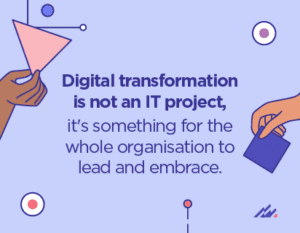Article
Insights from a digital health leader: How can an EPR be implemented in just a few months?
Electronic patient records (EPRs) are critical tools within modern healthcare delivery and are essential in supporting the recovery and sustainability of the NHS. This health IT helps clinicians provide better patient care by giving them access to vital patient data, reducing errors and duplication, and supporting more informed decision-making.
However, implementing an EPR system can be a complex and time-consuming process, often taking years to complete. But what if it didn’t have to be that way? What if you could implement an EPR system in just a few months without compromising quality and safety? Here are some tips for digital health leaders looking to implement an EPR system quickly and effectively.
 1. Choose the right EPR system for your organisation
1. Choose the right EPR system for your organisation
One of the most important decisions you’ll make when implementing an EPR system is choosing the right system for your organisation. It’s important to look beyond the big EPR providers in the market and consider other systems that might be a better fit for you. Do you need to replace everything, or can you take an incremental approach and focus on those areas where you can get the biggest gains, such as the clinicals first? You should take the time to research different systems, speak to other healthcare organisations that have implemented them, and demo the systems before deciding.
2. Keep the patient at the centre of the transformation
Any digital transformation should be focused on the patient, and implementing an EPR system is no exception. You should always be asking yourself what changes you can make that will have the biggest impact on patient care. Keeping the patient at the centre of the transformation ensures you’re making changes that will make a real difference to patient outcomes.
3. Tell stories of incremental successes
Digital transformation can be a hard sell to stakeholders, especially if they’re only focused on the financial bottom line. To get your Board onside, you need to tell stories of incremental successes. Show them how the EPR system is making a difference in patient care, reducing errors and improving outcomes. By focusing on the positive changes the EPR system is bringing, you can help stakeholders to see the benefits of digital transformation beyond just financial returns.
4. Involve and engage everyone
Digital transformation is not an IT project, it’s something for the whole organisation to lead and embrace. It’s important to involve and engage everyone, from clinicians to support staff to patients themselves. Involving everyone in the process helps align the way the EPR system is implemented—both effectively and sustainably. You should also invest in training and support to ensure that everyone feels comfortable using the new system and understands its benefits.
As you and your entire organisation look toward the summit of healthcare, implementing an EPR system quickly and effectively is critical. It requires a combination of the right technology, a patient-focused approach, stakeholder engagement and involvement from everyone in the organisation. By following these tips, you are well placed to successfully implement an EPR system in a matter of months, without affecting quality and/or safety. To learn more why you should choose Sunrise EPR, please click here.













